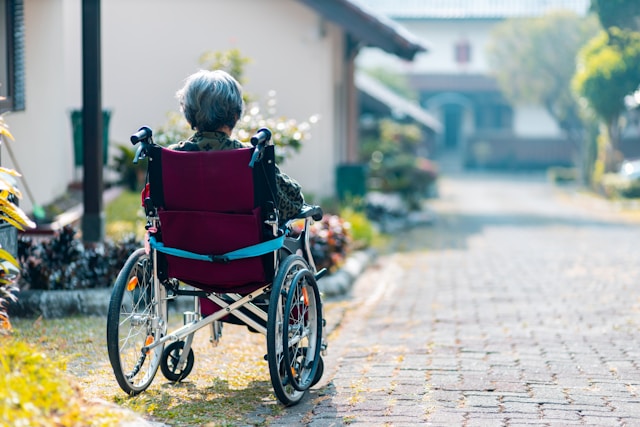Addressing Mobility Concerns in Seniors: A Guide to Support and Costs

Aging brings wisdom, experience, and a new perspective on life. However, it also introduces physical changes, one of the most significant being a decline in mobility. For seniors, mobility is not just about walking—it’s about maintaining independence, social connection, and quality of life. With nearly one in four adults aged 65 and older reporting some form of mobility limitation, this issue has become a critical focus for families, caregivers, healthcare providers, and policy-makers alike.
In this article, we will explore the causes of mobility challenges in older adults, delve into the tools and resources that can help manage these issues, and offer insight into the costs associated with mobility aids and long-term support. Whether you are a senior, a caregiver, or a loved one looking for answers, this guide is designed to empower you with knowledge and options.
What Are Mobility Challenges?
Mobility challenges refer to difficulties in moving freely, safely, and efficiently. This can range from trouble getting out of bed or a chair to being unable to walk unassisted. For seniors, these issues often result from a combination of physical, medical, and environmental factors.
Common mobility challenges include:
- Difficulty walking or standing for long periods
- Trouble with balance and coordination
- Increased risk of falls
- Joint stiffness and muscle weakness
- Difficulty climbing stairs or navigating uneven surfaces
Mobility limitations can have a domino effect, leading to isolation, depression, and further health deterioration. Understanding what causes these challenges is the first step in managing them effectively.
Common Causes of Mobility Issues in Seniors
Mobility problems don’t emerge overnight. They often develop gradually and result from a combination of age-related changes, underlying health conditions, and lifestyle factors.
1. Musculoskeletal Changes
As we age, our muscles lose mass and strength—a condition known as sarcopenia. Bone density also declines, increasing the risk of fractures. Osteoarthritis, a degenerative joint disease, is another common culprit that causes stiffness and pain, particularly in weight-bearing joints like hips and knees.
2. Neurological Conditions
Diseases such as Parkinson’s, multiple sclerosis, and stroke can severely affect coordination, balance, and movement. These conditions often require specialized support and ongoing management to preserve mobility.
3. Cardiovascular and Respiratory Problems
Heart disease and chronic obstructive pulmonary disease (COPD) can cause fatigue, shortness of breath, and reduced physical stamina. These conditions can indirectly limit mobility by discouraging physical activity.
4. Cognitive Decline
Alzheimer’s disease and other forms of dementia not only affect memory but can also impair spatial awareness and balance. This leads to confusion and increased risk of falls.
5. Medication Side Effects
Many seniors are on multiple medications (polypharmacy), some of which may cause dizziness, weakness, or impaired coordination, contributing to mobility issues.
6. Environmental Factors
Homes not adapted for aging individuals—such as those with stairs, narrow doorways, or slippery floors—can exacerbate mobility limitations.
Signs Your Loved One May Be Struggling with Mobility
Recognizing early warning signs of mobility decline can help prevent injury and plan for necessary support.
Look for:
- Hesitation to walk or go outdoors
- Complaints of joint or muscle pain
- Using furniture or walls for support
- Difficulty with daily activities like bathing or dressing
- A recent fall or near-fall
- Noticeable changes in posture or gait
If these signs are present, it may be time to consult a healthcare provider and explore supportive tools and resources.
Tools and Devices to Support Senior Mobility
Fortunately, there is a wide range of mobility aids available today, tailored to various levels of need. The right tool can help seniors maintain their independence and reduce the risk of injury.
1. Canes
Canes provide balance support for those with mild mobility issues. They come in various forms:
- Standard canes: For minimal support
- Quad canes: With four tips for greater stability
- Folding canes: Portable and easy to store
2. Walkers and Rollators
Walkers offer more support than canes. Rollators are walkers equipped with wheels, a seat, and brakes—ideal for those who tire easily but still want to stay active.
3. Wheelchairs
Manual and electric wheelchairs are suitable for those with severe mobility impairments. Power chairs offer enhanced autonomy and are particularly useful for individuals who lack upper body strength.
4. Mobility Scooters
Scooters are a good option for seniors who can walk short distances but need help covering larger areas. They’re commonly used for shopping, parks, or community events.
5. Stair Lifts and Home Modifications
Installing stair lifts, grab bars, and ramps can make a home significantly more accessible. Bathroom safety modifications like walk-in tubs and shower chairs are also important.
6. Wearable Technology
Modern wearables can track activity levels, detect falls, and even notify emergency contacts. Devices like smartwatches and fall-alert systems provide both peace of mind and practical help.
Emotional and Social Impact of Mobility Loss
Mobility challenges go beyond the physical realm. They can deeply impact a senior’s emotional well-being and social life.
- Isolation: Seniors who struggle to move around may avoid social gatherings, leading to loneliness and depression.
- Loss of independence: Relying on others for transportation or daily tasks can be emotionally taxing.
- Frustration and embarrassment: Using mobility aids may be viewed as a sign of weakness by some, affecting self-esteem.
Caregivers and family members must address these emotional aspects with empathy, reassurance, and encouragement.
Support Systems and Services
Having the right support can make a world of difference for seniors facing mobility challenges. From healthcare to community services, many resources are available.
1. Physical and Occupational Therapy
Therapists can design personalized exercise programs to improve strength, flexibility, and balance. They also train individuals to use mobility aids effectively and safely.
2. In-Home Care
Home care services provide assistance with activities of daily living (ADLs), such as bathing, dressing, and meal preparation. This can be short-term or long-term, depending on need.
3. Transportation Services
Many cities offer senior transportation options, such as accessible public transit or non-emergency medical transport (NEMT). These services are essential for medical appointments, errands, and social activities.
4. Community Centers and Support Groups
Senior centers offer fitness classes, educational programs, and peer support. Social engagement through these groups can offset the emotional effects of mobility loss.
5. Medicare and Medicaid Support
Government programs often provide coverage for mobility aids, physical therapy, and in-home care. Understanding what is covered and how to apply is crucial for families navigating care options.
Financial Costs of Managing Mobility Challenges
Mobility tools and support services can be expensive, particularly for those on a fixed income. Below is a general overview of the costs involved.
1. Equipment Costs
- Canes: $10–$50
- Walkers/Rollators: $50–$300
- Wheelchairs: $100–$5000+
- Mobility scooters: $700–$3000
- Stair lifts: $2500–$5000 per floor
- Home modifications: Can range from $500 for grab bars to $30,000+ for full renovations
2. Therapy and Professional Services
- Physical/Occupational Therapy: $100–$200 per session (often partially covered by insurance)
- Home Health Aides: $20–$40 per hour
- Nursing Care: $50+ per hour, depending on level of care
3. Insurance and Reimbursement
Medicare Part B typically covers:
- Walkers, wheelchairs, and scooters if deemed medically necessary
- Outpatient therapy services
- Durable medical equipment (DME)
Medicaid and Veterans Affairs programs may offer additional benefits, especially for home modifications or long-term care.
4. Grants and Nonprofit Assistance
Several organizations help seniors afford mobility equipment:
- Rebuilding Together (home modifications)
- United Cerebral Palsy Equipment Fund
- Local Area Agencies on Aging (grants and referrals)
It’s worthwhile to explore multiple funding sources when budgeting for mobility-related needs.
Tips for Choosing the Right Mobility Aid
Selecting the correct mobility device requires careful consideration. Here’s how to make an informed choice:
- Consult a healthcare provider: Always get professional input to assess the level of support needed.
- Trial the equipment: Many retailers offer demo sessions.
- Check for adjustability: Proper fit is essential to ensure safety and comfort.
- Factor in portability: Consider weight and storage options, especially for frequent travelers.
- Ensure quality and warranty: Investing in a reputable brand may save money in the long term.
Promoting Mobility Through Lifestyle
While tools and support are important, maintaining an active lifestyle can prevent or delay the onset of mobility challenges.
- Exercise regularly: Activities like walking, tai chi, and yoga enhance flexibility and strength.
- Stay socially engaged: Interaction reduces the emotional burden of mobility issues.
- Eat a balanced diet: Proper nutrition supports joint and muscle health.
- Manage chronic conditions: Keeping health problems like diabetes and hypertension under control can improve mobility outcomes.
Photo by Steven HWG on Unsplash






